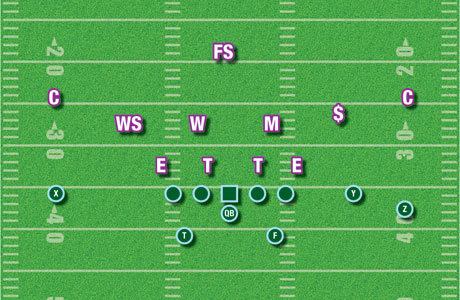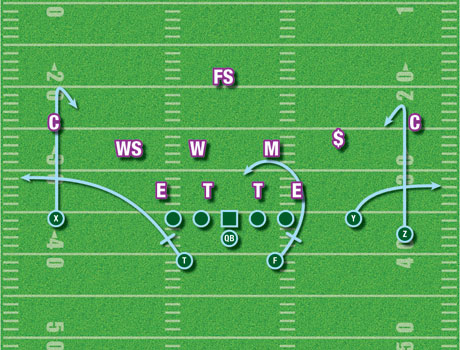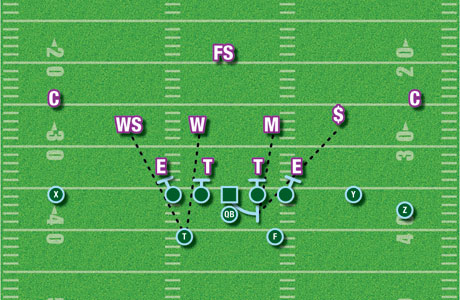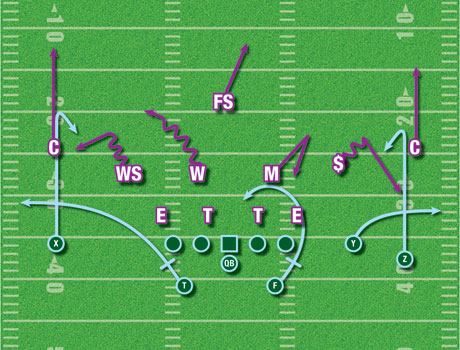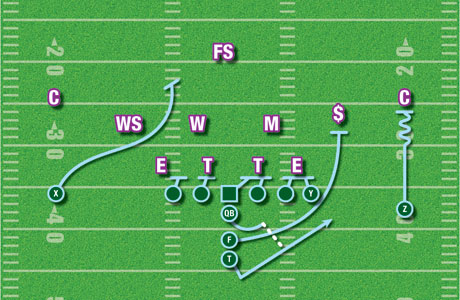AMERICAN FOOTBALL MONTHLY THE #1 RESOURCE FOR FOOTBALL COACHES
Article CategoriesAFM Magazine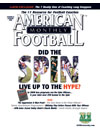
|
A Systematic Approach to Your Quarterbacks\' Thought Processby: Dan DoddOffensive Coordinator and Quarterbacks Coach, Tulane University © More from this issue In my 28 years of coaching I have had the opportunity to work with whom I believe to be three of the finest offensive coordinators/quarterback coaches in the history of college football: Bob Toledo, Dennis Franchione and Brian Billick, all whom have been instrumental in my coaching development. It should be noted that Coach Billick was on his way out of Utah State when I was on my way in. He has been very gracious down through the years in terms of helping with the development of my thought processes. All three of these coaches I mentioned share four very important characteristics: 1. All are outstanding game day play callers. 2. All are outstanding at developing game plans. 3. All are outstanding developers of QBs. 4. All are all demanding yet patient teachers. My association with them as well as many other coaches has helped me develop a systematic approach for a quarterback to go through. If properly applied, this system will allow your QB to have a mindset that will allow him to handle any situation. PASS PLAYS: THOUGHT PROCESS A. After breaking the huddle on the way to the LOS, think protection. A. Does the protection require the QB to direct the offensive line and backs? B. Does this protection require hots or sight adjustments? B. At the LOS with hands under center or in the gun, apply protections A. Make a directional call if necessary. B. Identify potential blitzers for hots and sight adjustments. C. Make sure WRs are on your page in a sight adjustment environment. After protection thought process has occurred, then and only then, turn your attention to route thought process and identify shells for reads. C. When ball is snapped: A. Quickly check hots and sight adjust throw, if necessary. B. Reconfirm pre-snap read on drop and throw ball to proper receiver. Let’s apply this model to a basic protection and route that is in almost every playbook. We will start with a four out, hot frontside protection and a basic curl/flat route (See Diagrams 1 and 2).
After breaking the huddle and on the way to the LOS, the QB is thinking protection. The QB in this situation knows he has both a hot (strong takes both SS and MLB to come for hot throw to WR) and a slight adjust. Weak also takes both the WS and WLB to come to throw the slight adjustment to the X receiver. At the LOS or hands up in the gun, protection is applied (See Diagram 1). The QB directs the center to the MLB (frontside scan) and he calls the Mike 50 with his jersey number. The QB then points to the WS and WLB to get X on his page. He then decides where the first threat is. This is the first critical decision the QB makes at the LOS. The QB must determine if the passing threat is from the strongside (hot) or backside (slight adjustment). He then focuses his attention on the first threat as he prepares to make his drop. The QB identifies coverage-man or cover 2 or 3 for route thought process (See Diagram 2). Then the ball is snapped and the QB executes a 5 step drop. If the FS is tilted weak, indicating potential for a weak blitz, the QB focuses attention on the weakside sight adjustment (See Diagram 3). In this situation, the WS does not come so the QB directs his attention to his coverage key for route. The QB has then determined the converge to be a 3 shell (See Diagram 4). The QB knows he has a movement key off of the SS as the SS chases the Y to the flat. This opens up Z on a curl route as the QB delivers the ball to Z.
RUN PLAYS: THOUGHT PROCESS A. After breaking the huddle on the way to the LOS, think numbers. Do I have equal or more numbers than the defense? B. At the LOS with hands under center or up in the gun: 1. Check numbers (See Diagram 5). 2. Look for advantage check possibilities. Can I run a different play or check my play ‘over’ to gain a numeric advantage? C. When the ball is snapped: If the numbers are even, the QB will stay with the play called in the huddle. Let’s apply this model to a basic two back pitch play. After breaking the huddle the QB knows he can account for every defensive player in front with the TE to backside tackle personnel and the fullback set to block the SS. At the LOS, the QB identifies the proper number of defenders based on blocking pattern (See Diagram 6). There’s no reason to make an ‘over’ and no advantage check better than the huddle call. The ball is then snapped and a strong side toss play is executed.
It is my hope that you can take this three step approach and make it fit into your system. In almost every offensive system, the QB is the guy that drives the engine. By giving him a simplistic but inclusive system of pre-and post-snap thoughts we feel like we can keep our offense from ‘running up hill.’ All that is required to make this system work is a sound offensive package and quality practice reps. Please remember that this thought process requires that the QB has plenty of time in practice at the LOS. By walking with him to the LOS and having him give you his thoughts, you can speed up his development. |
|
| HOME |
MAGAZINE |
SUBSCRIBE | ONLINE COLUMNISTS | COACHING VIDEOS |
Copyright 2024, AmericanFootballMonthly.com
All Rights Reserved


